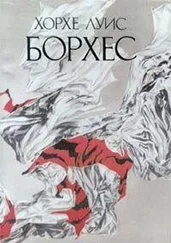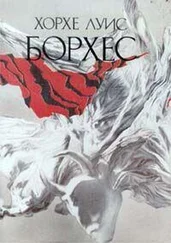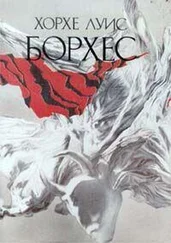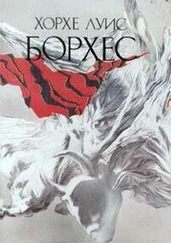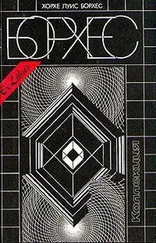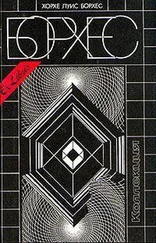Хорхе Борхес - Collected Fictions
Здесь есть возможность читать онлайн «Хорхе Борхес - Collected Fictions» весь текст электронной книги совершенно бесплатно (целиком полную версию без сокращений). В некоторых случаях можно слушать аудио, скачать через торрент в формате fb2 и присутствует краткое содержание. Год выпуска: 1999, ISBN: 1999, Издательство: Penguin (UK), Жанр: Старинная литература, на английском языке. Описание произведения, (предисловие) а так же отзывы посетителей доступны на портале библиотеки ЛибКат.
- Название:Collected Fictions
- Автор:
- Издательство:Penguin (UK)
- Жанр:
- Год:1999
- ISBN:9780140286809
- Рейтинг книги:5 / 5. Голосов: 1
-
Избранное:Добавить в избранное
- Отзывы:
-
Ваша оценка:
- 100
- 1
- 2
- 3
- 4
- 5
Collected Fictions: краткое содержание, описание и аннотация
Предлагаем к чтению аннотацию, описание, краткое содержание или предисловие (зависит от того, что написал сам автор книги «Collected Fictions»). Если вы не нашли необходимую информацию о книге — напишите в комментариях, мы постараемся отыскать её.
Collected Fictions — читать онлайн бесплатно полную книгу (весь текст) целиком
Ниже представлен текст книги, разбитый по страницам. Система сохранения места последней прочитанной страницы, позволяет с удобством читать онлайн бесплатно книгу «Collected Fictions», без необходимости каждый раз заново искать на чём Вы остановились. Поставьте закладку, и сможете в любой момент перейти на страницу, на которой закончили чтение.
Интервал:
Закладка:
* Junin: Site of a famous battle in the wars of independence. The Battle of Junin took place in the then department of Peru; on August 6,1824, a cavalry engagement was fought between Simón Bolivar's nationalist forces and the royalist forces under José de Canterac. The tide was turning against the independence forces until the royalist rear was attacked by a force of Peruvian hussars under the command of Isidoro Suárez—one of JLB's forebears and a man who in varying degrees and under varying permutations lends his name to JLB's fictions. The royalists were routed.
* The Death of Monk Eastman: This story is taken, as JLB indicates, from Asbury's The Gangs of New York, generally pp. 274-298, but also, for the quotation about "nicks in his stick," p. xviii. Where JLB has clearly borrowed directly from Asbury and it has been possible to use Asbury's words, the translator has done so; in other cases, the translator has just borrowed the appropriate terminology, such as the "Mikado tuck-ups" and the "stuss" games.
The Disinterested Killer Bill Harrigan
* Always coiled and ready to strike: One of the sources that JLB gives for this story is Frederick Watson's A Century of Gunmen, though the truth is, there is not much there that JLB seems actually to have used. With, that is, the possible exception of this phrase, siempre aculebrado in the Spanish, which the translator has rendered conjecturally in this way. "Aculebrado," from the Spanish culebra, "snake," calls to mind in the native Spanish speaker the notion of "coiled, like a snake" and also of "snakelike, slithering." On page 77 of his book, Watson quotes an old western novel, which says this: "It's not the custom to war without fresh offence, openly given. You must not smile and shoot. You must not shoot an unarmed man, and you must not shoot an unwarned man.... The rattlesnake's code, to warn before he strikes, no better, [i.e., there's no better extant code for a man of the West] : a queer, lop-sided, topsy-turvy, jumbled and senseless code—but a code for all that." Thus it seems that JLB may have wanted to paint Billy the Kid as an even worse "varmint" than the rattlesnake, since the rattlesnake at least gives fair warning, unlike Billy, who, as we see in a moment, shoots the Mexican Villagrán before Villagran knows what's happening. Perhaps, in fact, that was what made Billy the Kid so dangerous—so dangerous that his friend Pat Garrison shot him in cold blood. But whatever JLB's motivation for this word, it is a very mysterious one to use here, however related to all the other animal imagery used throughout this volume.
The Uncivil Teacher of Court Etiquette Kôtsuké no Suké
* Rônins: In A. B. Mitford's Tales of Old Japan, which is the source of much of this story, Mitford inevitably uses this word for the "loyal retainers" of the dead noble-man. The word "Rônin" means literally a "wave-man," one who is tossed about hither and thither, as a wave of the sea. It is used "to designate persons of gentle blood, entitled to bear arms, who, having become separated from their feudal lords [or in this case, of course, vice versa], wander about the country in the capacity of knights-errant. Some went into trade, and became simple wardsmen" (Mitford). While Borges himself does not use this word, the word is inevitably used in English reports of the phenomenon, and so the translator has thought it appropriate to translate what the Spanish has as "retainers," "captains," etc., by the technical word. It is possible, of course, that JLB is doing with the Chinese system of loyalties what he did to the world's architecture: remaking it in the likeness of Argentina's. One notes that virtually all the houses that JLB uses in his fictions have long, narrow entrances and interior patios, the very floor plan of the Buenos Aires house of the end of the nineteenth century. Likewise, one senses that JLB may have used the word "captains" in the story to indicate the sort of relationship between the lord and his retainers that was common in the Argentina of caudillos and their captains. Thus the translator recognizes that if JLB was trying, consciously or not, to produce this effect, it may be somewhat risky to go all the way to the source, to"Rônin,"for the "translation." The reader is notified. Likewise, "Chushingura" is the name by which the dramas, poems, and films are inevitably known in English, so the translator has incorporated that inevitable cultural reference. From its absence in the Spanish text, one supposes that in Spanish the word"Chushingura" was not used.
* The source for this story: Much of this story is indeed taken from Mitford's Tales of Old Japan, pp. 3-19. The translator has taken the spelling of the characters' names and several quotations, such as the "Satsumi man's," from there.
Man on Pink Corner
* Title: The title of this story in Spanish is"Hombre de la esquina rosada"; it presents many intriguing possibilities, and therefore many problems, to the translator, not so much for the words as for the cultural assumptions underlying them. This story is in a way a portrait of the compadrito (the tough guy of the slums) or the cuchillero (knife fighter) and his life; as such, many items of that "local color" that Borges deplored in, for example, stories of the "exotic" Orient are found, though casually and unemphatically presented. The first thing that must be dealt with is perhaps that "pink corner." Esquina ("corner") is both the actual street corner (as other translations of this story have given it, without the colorful adjective) and the neighborhood general-store-and-bar, generally located on corners, which was the hangout for the lowlife of the barrio. The reader can see this establishment clearly in "Unworthy" (in the volume tided Brodie's Report) and more fleetingly in many other stories. What of the adjective "pink" (rosada) then? The Buenos Aires of JLB's memory and imagination still had high, thick stucco or plastered brick walls lining the streets, such as the reader may see in the colonial cities of the Caribbean and Central and South America even today: Havana, San Juan, Santo Domingo in the Dominican Republic, etc. Those walls in Buenos Aires were painted generally bright pastel colors; Borges refers to "sky blue" walls more even than to pink ones. Thus Borges was able to evoke in two words (esquina rosada) an old neighborhood of Buenos Aires, populated by toughs and knife fighters, and characterized by bars and bordellos in which that "scandalous" dance the tango was danced. (In its beginnings, the tango was so scandalous that no respectable woman would dance it, and one would see two men— compadritos —dancing together on street corners; nor would the tenement houses, which had moved into the large old houses vacated by the higher classes, allow such goings-on, even though these conventillos, as they were called, might be none too "respectable"—certainly none too "genteel"—themselves.) In evoking that old Buenos Aires, Borges also evoked "the man"—here, the Yardmaster, Rosendo Juárez, and the nameless narrator of the story, all of whom participate in the coldly violent ethos of the orillero, the (to us, today) exaggeratedly macho slum dweller (especially along the banks of the Maldonado [see note below]) who defended his honor against even the most imagined slight. However, certain aspects of this "man" will probably strike the non-Argentine reader as curious—for example, those "boots with high-stacked heels" (in the original Spanish, "women's shoes") and that "red carnation" in the first paragraph of the story "Monk Eastman, Purveyor of Iniquities," the same sort of carnation that appears in this story. There is also the shawl worn by the gaucholike Yardmaster. These elements, however, were authentic "touches"; the compadrito affected these appearances. Previous translations have apparently tried to give all this "information" by calling the story "Street-corner Man," emphasizing the "tough guy hanging out on the corner" aspect of the story, and one can be sympathetic to that solution. Another intriguing possibility, however, is suggested by Bernésin the first volume of the Gallimard edition of JLB's Oeuvres complètes. I translate the relevant paragraph: "The title of the original publication, which omits the definite article, reminds the reader of the title of a painting given in the catalog of an art exhibit. It stresses the graphic aspect of the scene, whichBorges, in the preface to the 1935 edition, called the 'pictorial intention' of his work. One should think of some title of a piece by Pedro Figari-----[p. 1497] " This "impressionist" tide, then, should perhaps be retained; what one loses in "information" one gains in suggestion.
Читать дальшеИнтервал:
Закладка:
Похожие книги на «Collected Fictions»
Представляем Вашему вниманию похожие книги на «Collected Fictions» списком для выбора. Мы отобрали схожую по названию и смыслу литературу в надежде предоставить читателям больше вариантов отыскать новые, интересные, ещё непрочитанные произведения.
Обсуждение, отзывы о книге «Collected Fictions» и просто собственные мнения читателей. Оставьте ваши комментарии, напишите, что Вы думаете о произведении, его смысле или главных героях. Укажите что конкретно понравилось, а что нет, и почему Вы так считаете.

